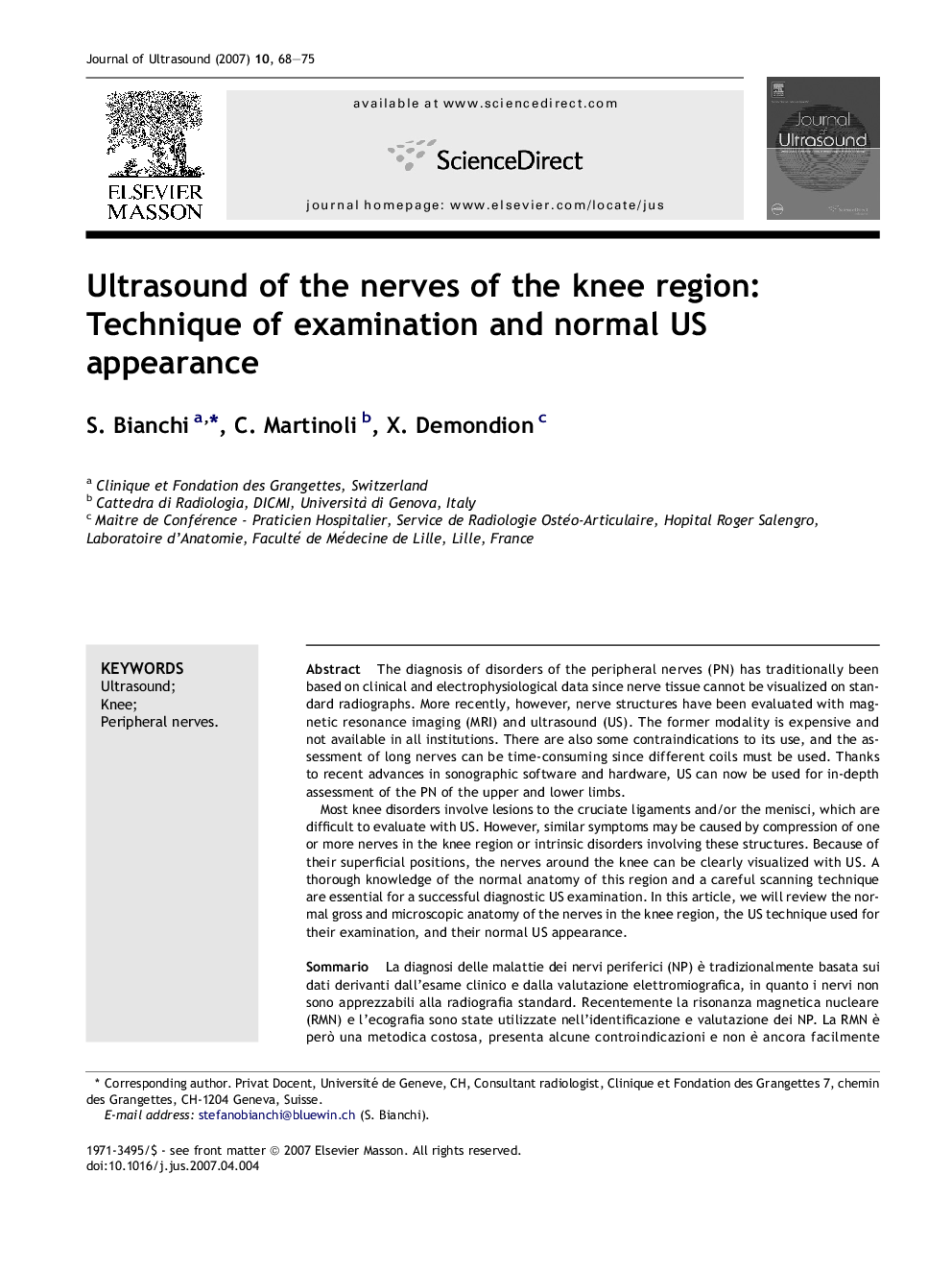| کد مقاله | کد نشریه | سال انتشار | مقاله انگلیسی | نسخه تمام متن |
|---|---|---|---|---|
| 4237011 | 1282970 | 2007 | 8 صفحه PDF | دانلود رایگان |

The diagnosis of disorders of the peripheral nerves (PN) has traditionally been based on clinical and electrophysiological data since nerve tissue cannot be visualized on standard radiographs. More recently, however, nerve structures have been evaluated with magnetic resonance imaging (MRI) and ultrasound (US). The former modality is expensive and not available in all institutions. There are also some contraindications to its use, and the assessment of long nerves can be time-consuming since different coils must be used. Thanks to recent advances in sonographic software and hardware, US can now be used for in-depth assessment of the PN of the upper and lower limbs.Most knee disorders involve lesions to the cruciate ligaments and/or the menisci, which are difficult to evaluate with US. However, similar symptoms may be caused by compression of one or more nerves in the knee region or intrinsic disorders involving these structures. Because of their superficial positions, the nerves around the knee can be clearly visualized with US. A thorough knowledge of the normal anatomy of this region and a careful scanning technique are essential for a successful diagnostic US examination. In this article, we will review the normal gross and microscopic anatomy of the nerves in the knee region, the US technique used for their examination, and their normal US appearance.
SommarioLa diagnosi delle malattie dei nervi periferici (NP) è tradizionalmente basata sui dati derivanti dall'esame clinico e dalla valutazione elettromiografica, in quanto i nervi non sono apprezzabili alla radiografia standard. Recentemente la risonanza magnetica nucleare (RMN) e l'ecografia sono state utilizzate nell'identificazione e valutazione dei NP. La RMN è però una metodica costosa, presenta alcune controindicazioni e non è ancora facilmente disponibile. In più, la valutazione di lunghi tratti di nervo allunga i tempi d'esame, in quanto richiede l'uso di differenti bobine. I recenti miglioramenti nell'hardware e software delle apparecchiature ecografiche hanno portato a un miglioramento delle immagini ecografiche e a una accurata valutazione dei NP.Nonostante le malattie dei menischi e dei legamenti, di difficile valutazione ecografica, siano predominanti, la compressione e le malattie dei nervi del ginocchio possono essere responsabili dei sintomi riferiti dal paziente. I nervi del ginocchio decorrono superficialmente e sono quindi ben valutabili con l'ecografia. Un'ottima conoscenza dell'anatomia e una rigorosa tecnica d'esecuzione dell'esame sono requisiti indispensabili per un corretto esame ecografico. Nella prima parte di questo articolo ricordiamo l'anatomia microscopica dei NP, seguita da una descrizione dell'anatomia ecografica normale. Quindi, dopo aver brevemente ricordato l'anatomia macroscopica dei nervi del ginocchio, ne descriviamo la tecnica di esecuzione dell'esame e l'anatomia ecografica normale.
Journal: Journal of Ultrasound - Volume 10, Issue 2, June 2007, Pages 68–75